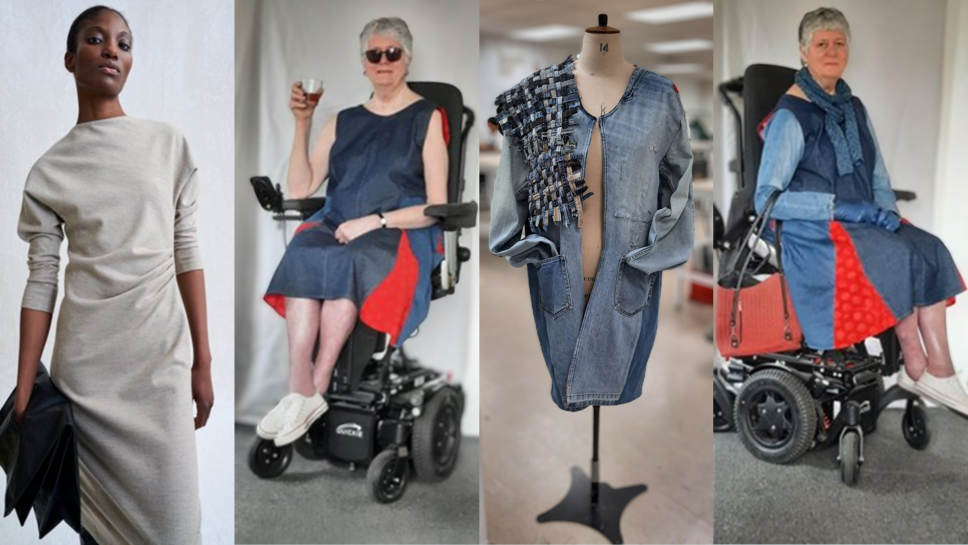
I’ve always been interested in clothes and have enjoyed sewing since I first used a sewing machine aged seven. But something I hadn’t thought a lot about until recently was the problem of finding clothes to wear in a wheelchair.
I’ve been living with Facioscapulohumeral muscular dystrophy (FSHD) for over 30 years and in 2019 I became a full-time wheelchair user. In many ways, it’s been a positive change because I’m no longer worried about falling over. But it has changed the options I have when it comes to deciding what to wear.
Shifting my focus
I continued making and adapting my own clothes to suit me, as I’ve always done. Then in 2021, during the Covid-19 pandemic, I decided I wanted a better knowledge of designing and making clothes, so I gave up my job as an NHS Workforce Manager to study for a Higher National Diploma (HND) in Fashion and Footwear Design at Leicester College.
It's been a very long time since I was in formal education and it was great fun to be back as a student, even if I was the oldest in the class and older than most of the tutors. Although the first few weeks were nerve-wracking, I found that the self-management and planning skills I’d developed at work were really useful in a different setting and made up for areas where I had less experience.
The design course
We would be set a brief, for example, to design a capsule collection of ten garments for ZARA in the style of dark romantics, or a modernist, white-inspired outfit. We’d create a large number of designs and then make two to three garments by drafting patterns and using a range of production processes.
We also learned about the fashion industry and how it works, including the ways retailers persuade us to buy more clothes to keep up with colours and styles changing over the seasons. We did modules on styling (how to make the clothes look good), and context (the messages we send out through our clothes, and how clothes are used as a form of social control).
As I learned more about the fashion industry, I was thinking about the options for people who use wheelchairs and how these could be improved.
When you use a wheelchair, floaty sleeves, loose fabric, and longline garments all become problematic as they can get tangled in the wheels.
Tight sleeves are impossible because they restrict your movement.
Long coats bunch up around your waist.
There are some specialist companies that make clothing for people with various disabilities, and mainstream retailers are always seeking to expand their market. So decided I had an opportunity to influence them to make clothing that was accessible to people who use wheelchairs.
It's hard to find clothes I like that are fashionable
After four years in a wheelchair, I know there are some clothes and styles I will never wear again. But I also know that many styles can be accessible. I want to be able to buy them in this season’s colours, with detailing that’s helpful for me – such as being easy to fasten and flattering when I’m sitting down.
I want to learn more about whether my experiences, frustrations, and preferences are shared by other people with limited mobility. I’ve created a short survey so I can understand your experiences of choosing and wearing clothes, and the styles and detailing that make a difference to you.
I’d be very grateful for your response (which shouldn’t take more than a few minutes) and I look forward to hearing what you have to say about what you want to wear.
